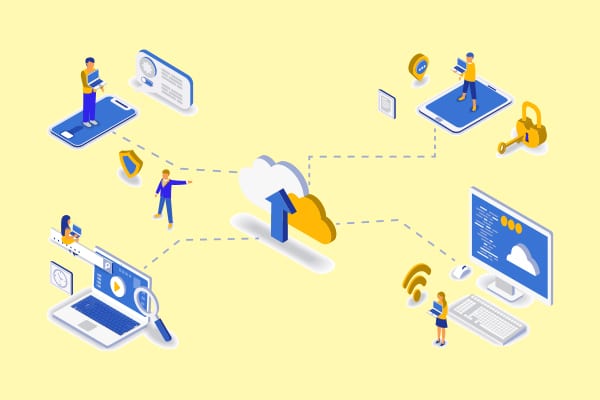Let’s delve into the intricacies of serverless architecture, explore its key benefits, and discuss how it’s changing the cloud landscape.
Imagine you’re building an automated text messaging app that sends personalised messages to users based on their preferences or behaviour. As the app gains popularity, the number of users and messages sent will increase dramatically. In a traditional server-based architecture, you would need to manually scale your servers to handle the increased load, which can be time-consuming, expensive, and prone to errors.
With serverless computing, however, the cloud provider automatically scales the necessary resources to handle the increased traffic. This means that your app can seamlessly handle peak loads without any downtime or performance degradation.
Serverless computing is not about the absence of servers; it’s about liberating developers from the burden of infrastructure, letting them focus on what truly matters—building and innovating. |
What is serverless computing?
Serverless computing is a cloud computing model where developers can build, run, and manage applications without having to provision or manage servers. That means developers don’t need to worry about infrastructure details like hardware, operating systems, or scaling.
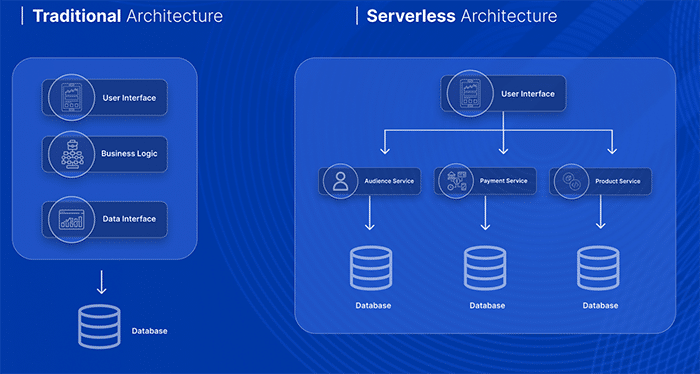
Table 1 highlights the key differences between traditional computing and serverless computing.
| Feature | Traditional computing | Serverless computing |
|
Developers manage servers, operating systems, and networking. | Platform provider manages infrastructure. |
|
Developers allocate resources upfront, often leading to underutilisation or overprovisioning. | Resources are allocated dynamically based on demand, optimising costs. |
|
Manual scaling is required to handle increased load. | Automatic scaling ensures optimal performance without manual intervention. |
|
Pay for upfront costs, regardless of usage. | Pay only for the resources consumed, often based on usage metrics like execution time and memory. |
|
Monolithic applications are common. | Microservices architecture is well-suited for serverless. |
|
Deploy applications to physical or virtual servers. | Deploy functions to the cloud platform. |
|
Ongoing maintenance is required for servers and operating systems. | Platform provider handles maintenance. |
|
Higher complexity due to infrastructure management. | Lower complexity, allowing developers to focus on application logic. |
|
Suitable for various applications, especially those with predictable workloads. | Ideal for event-driven applications, microservices, and applications with varying workloads. |
Table 1: A comparison of traditional and serverless computing
Types of serverless computing
Function as a service (FaaS): In FaaS, developers can write and deploy individual functions that execute in response to specific events. These functions are stateless, and the cloud provider manages scaling, execution, and maintenance of the infrastructure.
Examples: AWS Lambda, Azure Functions, Google Cloud Functions
Backend as a service (BaaS): BaaS provides preconfigured backend services like databases, authentication, storage, and APIs. Developers focus on frontend logic, while the cloud provider handles the backend infrastructure.
Examples: Firebase, AWS Amplify, Supabase
How it works
Serverless computing takes away the complexity of infrastructure management, allowing you to focus solely on your code. Here’s how it works.
Function as a service (FaaS) core: Serverless computing often revolves around function as a service (FaaS). Instead of deploying entire applications or servers, you write small, self-contained functions that handle specific tasks. These functions are only triggered when certain events occur (e.g., an HTTP request, file upload, or database change). Once the function completes, it automatically shuts down, saving resources and cost.
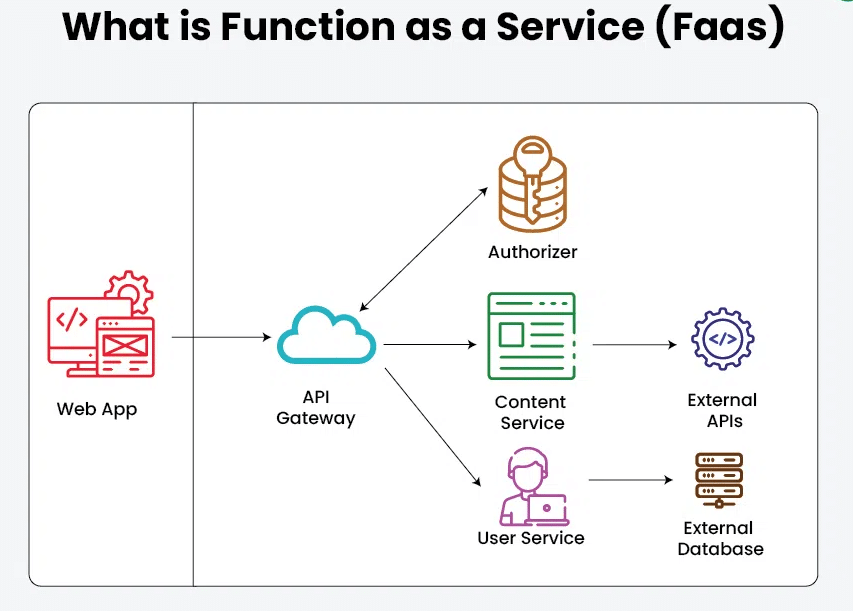
Dynamic scaling: Serverless environments automatically scale based on demand. If your application gets 10 requests, the platform runs 10 instances of your function, each handling one request. If there are 10,000 requests, it can scale up to handle all of them simultaneously, without you having to intervene or configure any servers.
Pay-per-execution: One of the most appealing aspects of serverless computing is that you only pay for what you use. Since functions only run when triggered, you’re charged based on the number of executions and the time your code takes to run (e.g., measured in milliseconds). There’s no need to worry about idle server time.
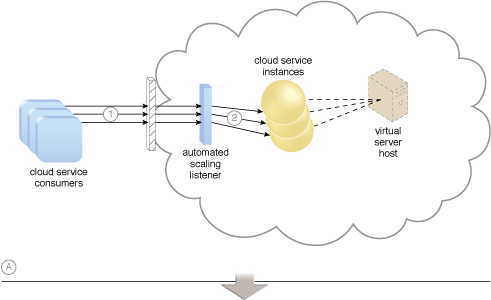
Event-driven architecture: Serverless applications are often event driven. Your functions are triggered by specific events, such as:
- API gateway requests (e.g., someone accessing your web API)
- Changes in databases (e.g., a new user added)
- Messages in queues (e.g., an order being placed)
The serverless platform listens for these events and automatically triggers the relevant functions.
Abstracted infrastructure management: In serverless computing, the cloud provider (e.g., AWS Lambda, Google Cloud Functions) manages the underlying infrastructure. You don’t need to worry about server provisioning, patching, scaling, or even monitoring. The cloud provider handles this, ensuring high availability and fault tolerance.
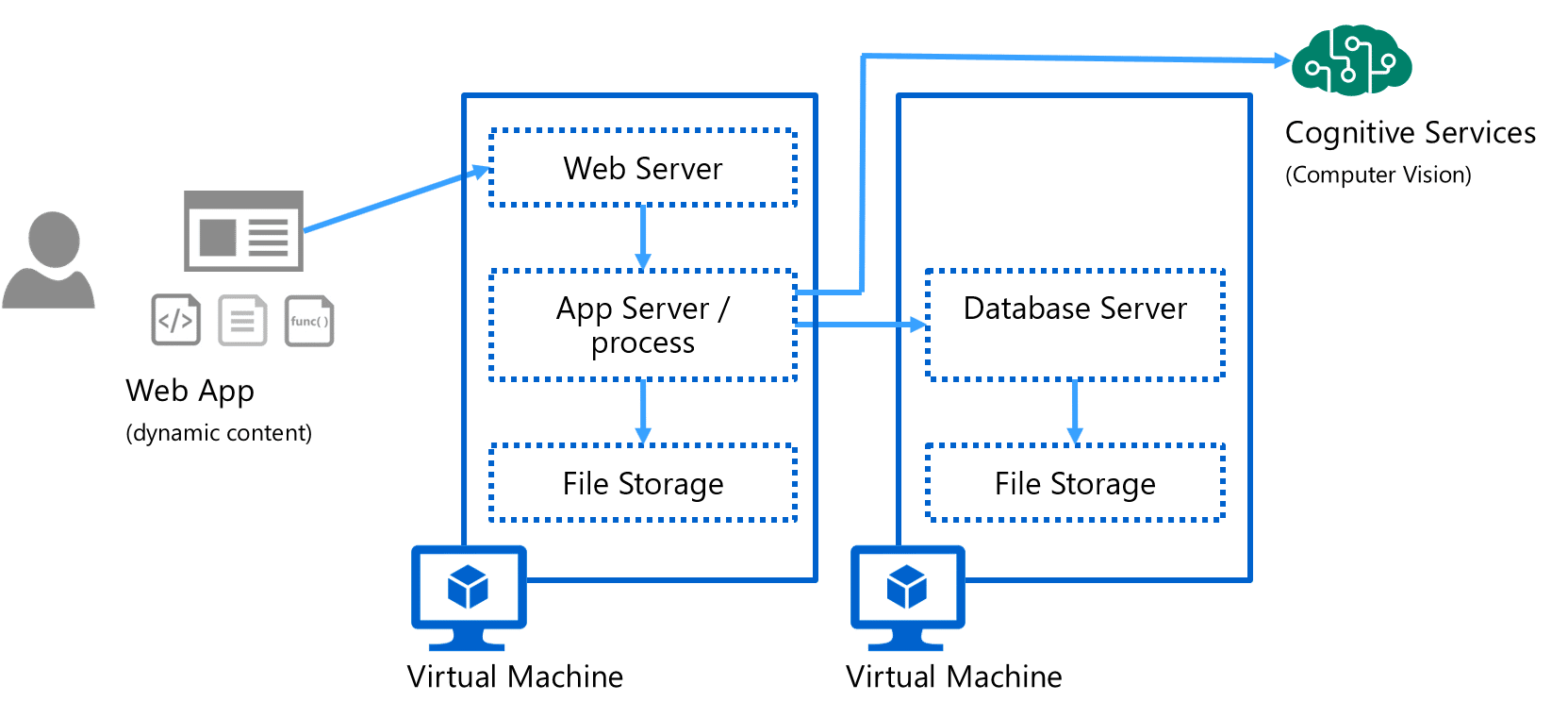
Stateless nature: Serverless functions are stateless by design. This means each time a function is triggered, it doesn’t retain any information from previous executions. If your application needs to keep track of state or session data, you store it externally, typically in a database or other stateful services.
Rapid development and deployment: Serverless allows developers to focus purely on writing code, without the hassle of managing servers. This accelerates the development process because you can deploy small, independent functions quickly and scale them as needed.
| Challenge | Solution |
| Cold starts | Use provisioned concurrency or schedule periodic invocations to keep functions warm. |
| Vendor lock-in | Design for portability by using open standards and adopting a multi-cloud or hybrid strategy. |
| Limited execution time | Break tasks into smaller functions or use containers and other services for long-running processes. |
| Resource limitations | Optimise code and delegate heavy processing or storage needs to external services. |
| Monitoring and debugging | Implement distributed tracing, and use cloud-native monitoring tools (e.g., AWS X-Ray, Azure Monitor). |
| Security | Enforce strict access controls, implement API gateways, and monitor for vulnerabilities continuously. |
| Cost management | Optimise function code to minimise execution time, and use cost-monitoring tools to track and manage expenses. |
| Concurrency limits | Optimise function design for concurrency or request higher limits from the provider if needed. |
| State management | Leverage external state management services like databases or distributed caches. |
| Latency sensitivity | Reduce cold start impact, optimise network usage, and deploy functions in regions close to users. |
Table 2: Challenges in serverless computing and their solutions
Changing the cloud landscape
Serverless computing is changing the cloud landscape by providing a more efficient, scalable, and developer-friendly approach to application development and deployment. Here’s how.
Simplified development and operations: Traditional cloud models require developers to manage infrastructure, including provisioning servers, setting up storage, and scaling resources based on demand. With serverless computing, this complexity is abstracted away. Developers can now write and deploy code without managing the underlying infrastructure. Cloud providers handle provisioning, scaling, patching, and even fault tolerance.
- This simplification means:
- Faster time-to-market for applications.
Reduced operational overhead, allowing developers to focus on writing business logic rather than managing infrastructure.
Scalability and flexibility: One of the most impactful changes brought by serverless computing is its ability to scale automatically. Serverless platforms like AWS Lambda, Azure Functions, and Google Cloud Functions can automatically scale applications in response to demand, from zero to millions of requests, without manual intervention. These platforms automatically allocate resources based on the number of incoming requests, ensuring optimal performance without over-provisioning.
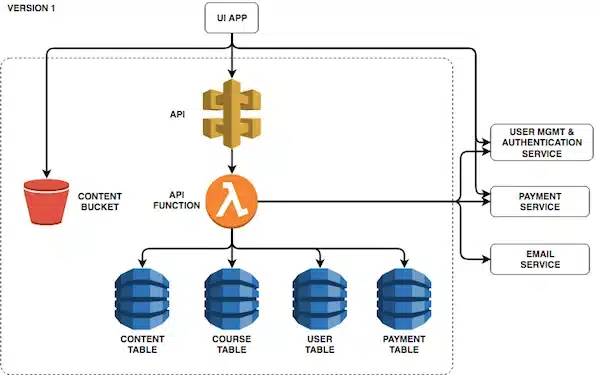
Cost efficiency: With serverless, users only pay for the actual compute time their code consumes. This pay-per-use model eliminates the need to maintain idle resources, significantly reducing costs, especially for applications with variable workloads.
Increased developer productivity: By removing the burden of infrastructure management, serverless computing allows developers to focus purely on coding and improving the user experience. This leads to:
- Faster development cycles.
- Improved collaboration between development and operations teams, enhancing the DevOps culture.
- Easier integration of microservices, where different parts of an application can be developed, deployed, and scaled independently.
Optimised resource utilisation: Serverless architecture ensures that resources are utilised only when needed. Since the infrastructure scales up or down based on real-time usage, it eliminates resource wastage, making cloud environments more energy-efficient and cost-effective. This efficiency not only reduces costs but also aligns with sustainable IT practices by reducing the carbon footprint of data centres.
Support for emerging technologies: The serverless model is proving to be a strong enabler for emerging technologies such as AI, machine learning, and IoT. These technologies require massive scalability and on-demand resource availability, which serverless computing provides. By eliminating infrastructure constraints, it allows developers to easily integrate machine learning models, AI services, or IoT data streams into their applications without having to worry about resource management.
In a nutshell, serverless computing is a powerful cloud computing model that offers significant benefits for developers and businesses. By understanding the concepts and use cases, you can determine if serverless is the right choice for your applications.
































































